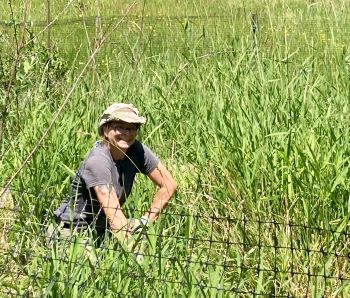
This guest blog post is written by Heron Meadow Head Steward Adria Magrath, a professional landscaper, biologist, bird enthusiast and naturalist who has been stewarding the meadow for the last year. In this post Adria summarizes activities and improvements in the meadow and discusses the ripple effects that restoration can have on humans, wildlife, water quality, and the wider landscape.
Thanks to the work of Vashon Nature Center through the Heron Meadow partnership with Vashon Center for the Arts, Heron Meadow wetland is becoming a vibrant and dynamic place for the community to visit nature, view nature art, and to learn how to steward land to improve wildlife habitat and ecological health. Last year’s work focused on maintaining plantings, managing invasives, and caretaking what treasures were already there. But, some big changes happened too. All of it was done with an eye towards encouraging the natural character of the site while keeping in mind the human experience. Sometimes I worked alone and sometimes alongside volunteers. Often, we would see people walking the paths and visiting the art. I invite you to visit and see the work we do there for yourself!
2023 Meadow Highlights:
One of the new things we tried this year was allowing the meadow to flourish more by mowing less, giving a feeling of lushness, and letting the grasses provide bird forage and nesting habitat, and cover for amphibians and insects. We continued the recent tradition of keeping a walking path mowed and clear – traversing around the perimeter of the entire meadow, including in front of the bird mural wall to the east, and connected in the middle by an undulating path with side routes through the willow thicket swale and up through the low-lying northeast corner. Except for volunteer Kevin’s much-appreciated help with the one tractor mow at the very end of the season, and a very first path mow at the start of the season, all the mowing, cutting, whacking and sawing used electric tools. This was new this past year and helped us accomplish our goal to reduce our carbon footprint while restoring the meadow.
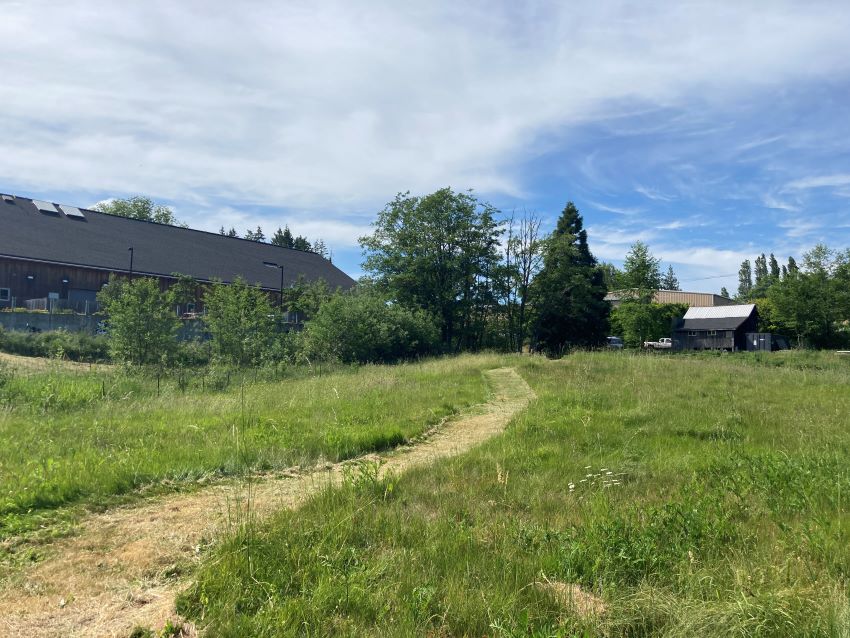
One drawback to not mowing the meadow is that invasive plants can more easily take hold. To remedy this, I went on regular ‘thistle patrols’ with hand scythes- often alongside a dedicated volunteer- walking a grid throughout the meadow and cutting Canada thistle right at the soil level. Evidence and experience show that to control this highly invasive plant you need to cut it and not disturb the roots. Disturbance of roots stimulates thistles to send up shoots and suckers, vastly aggravating the situation. Because mowing was regularly done in many of the worst areas for a few years, we are now able to keep up on what is left of the infestations using just the hand-scything technique.
Heron Meadow as a native restoration demonstration site:
During the Garden Tour in June, we had many visitors to Heron meadow. This meadow provided the only place on the tour for gardeners to witness ecological restoration of a wetland in action and learn things that applied to the stewardship of their own properties. It was incredible how many visitors were interested in learning about noxious invasive weeds! They were eager to know how to recognize them and how best to outwit them. The meadow served its purpose as an outdoor classroom. For example, I was able to show visitors the difference between two types of tansy and to recognize the work of a biological control agent, the cinnabar moth, imported to the Puget Sound region from the UK- the same place the tansy came from. Many different discussions followed these moments of inquiry. In the end I sent home all the county booklets on invasives I had.
Canada thistle is not the only invasive we contend with in the meadow. Visitors often ask me which is the worst invasive plant. Though I usually don’t feel the need to rank them, if I had to pick, it is probably the reed canary grass that spreads mostly via rhizomes and completely takes over the wetter areas on site. Known as an aggressive colonizer of wetlands and riparian areas (riparian refers to the interface of land and water ), reed canary grass completely takes over and crowds out the natives. It can grow as tall as 5-6 feet. If you have ever visited Fern Cove, where the waters of Shinglemill meet the beach, you have seen how reed canary grass can take over. Granted, it can provide some cover to critters on the ground during the heat of the summer but when it takes over land as a single species, it destroys everything else that might want to grow there and can change flow regimes and inhibit other ecological services. One way to fight it is to cut it, by mowing or other means. I’ve found using an electric trimmer to cut it along edges that can’t be mowed is very effective to keep it from growing, blooming, and spreading by seed.
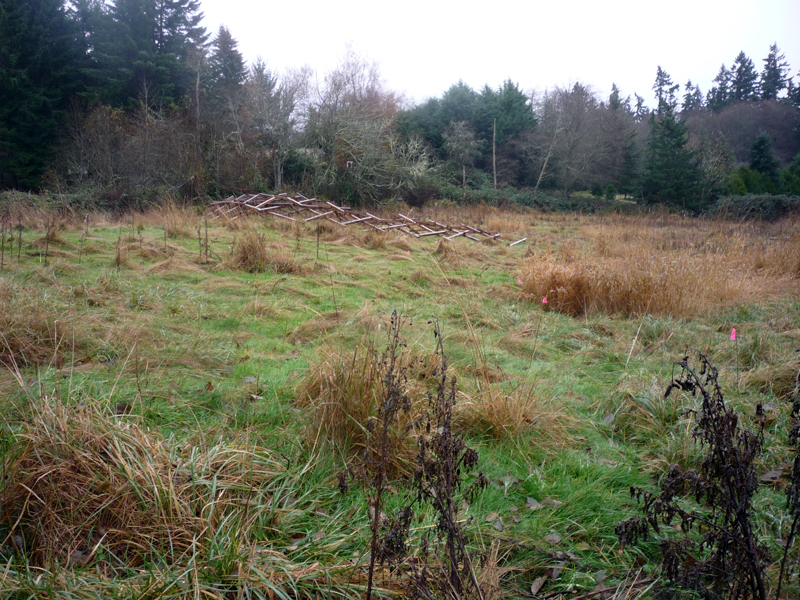
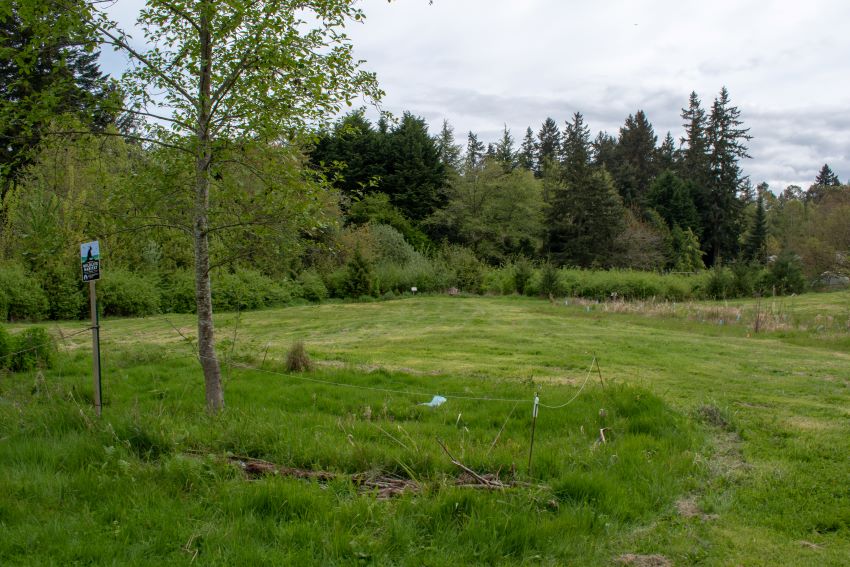
The only way I know to eradicate reed canary grass is to shade it out, by either smothering the surface with something completely opaque and/or densely planting things that can shade it out, such as thickets of willows or twinberry shrubs. This double tactic of mulching and densely planting has worked wonders in Heron meadow over the last 8 years by significantly reducing, even eliminating, reed canary grass. All the areas where planting and mulching have occurred used to contain a monoculture of reed canary grass. Now, shrubs like twinberry, a native member of the honeysuckle family, have replaced reed canary grass and become sprawling dense hedges filled with wildlife benefits. Twinberries need wet soil to grow well. So, these plants are especially good for the purpose of shading out invasive plants in wetlands. These natives and others also provide cover for a wider variety of animals as well as providing forage and food for birds.
During the first major phase of wetland restoration and mitigation, before the pandemic, a lot of work was focused on replacing the Himalayan blackberry and reed canary grass at the lower Southern parts of the meadow with native shrubs and trees. That area now boasts thorny wild rose thickets, shrubs of mature twinberry and adolescent Douglas fir trees, that all now feed and attract birds such as the cedar waxwing, chickadees, and kinglets- especially when the berries are ripe.
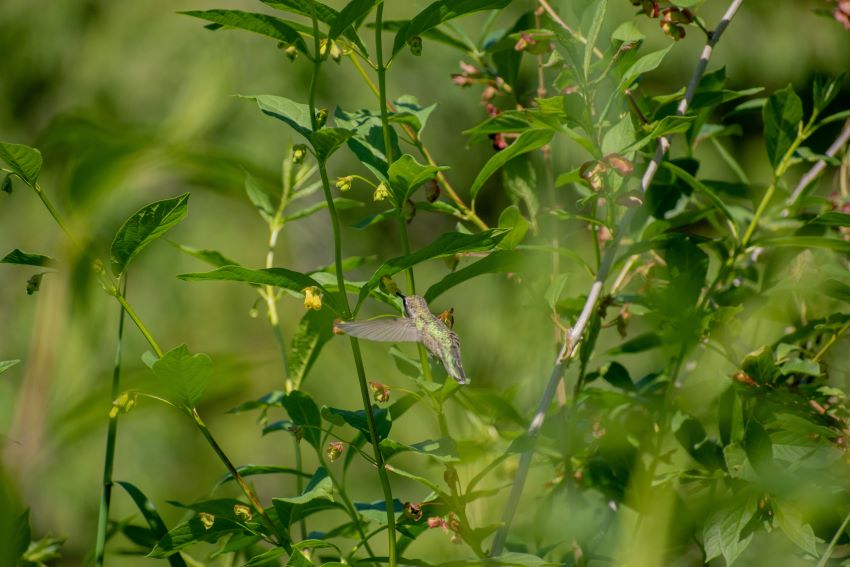
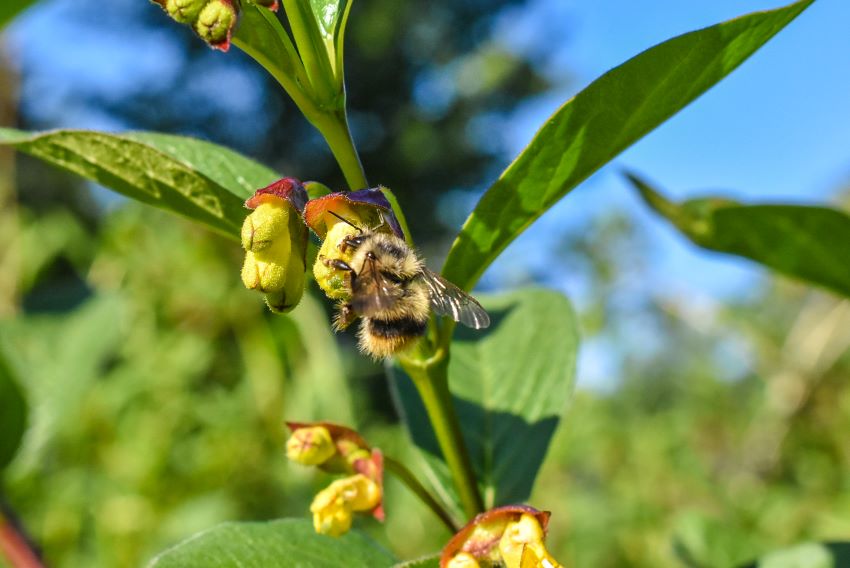
Wetland restoration and healthy waters:
Last fall, the remaining piece of the southern end of the meadow was addressed- a slope that goes from the path behind the Blue Heron building, down to a seasonal stream passing through the site. For years this slope had been covered in a large swath of black plastic that was placed to solarize the weeds beneath, including blackberry and reed canary grass. This plastic had begun to break down so we got it cleaned up, and a work party of volunteers covered the now bare and weed free soil with sheet mulching (layers of cardboard topped with wood chips) without delay. This helps keep invasives from recolonizing, adds to soil health as it breaks down, and- perhaps most importantly for the immediate time frame- protects the soil from rain and erosion. Mulching also shields from nutrient depletion and slows surface water runoff, allowing more time for the water to be absorbed into the land. Lastly, mulching with cardboard is another way of reducing our carbon footprint as the cardboard from hundreds of boxes has been returned to the soil and has fed the growth of plants.
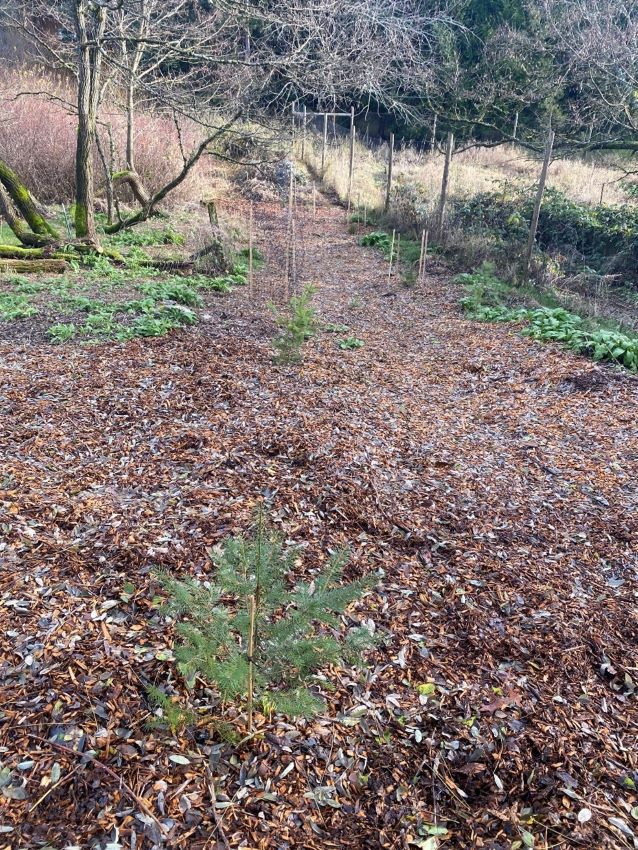
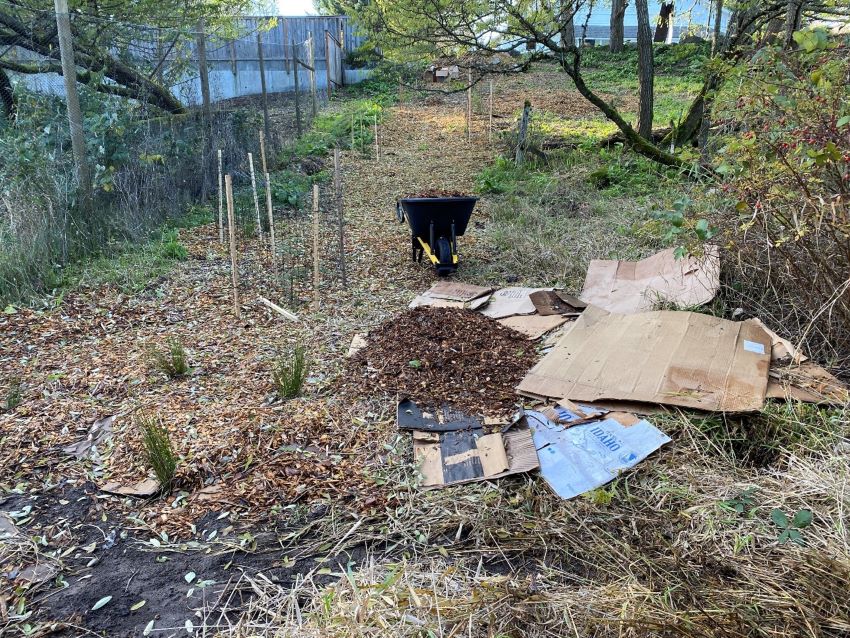
Work party volunteers planted a diverse group of native trees into the newly covered slope including: numerous Douglas fir, a few Western red cedars, a shore pine, a Western hemlock, a bitter cherry and a Grand fir. It is the start of a small community of trees whose canopy will eventually join the already prospering forest edge of Douglas firs planted years ago with the twinberry. These plantings, and additional ones in time, will stabilize the soil and absorb the erosive energy of rainfall. This helps increase the resilience of the entire Judd Creek watershed to the higher intensity winter storms we are experiencing under climate change conditions.
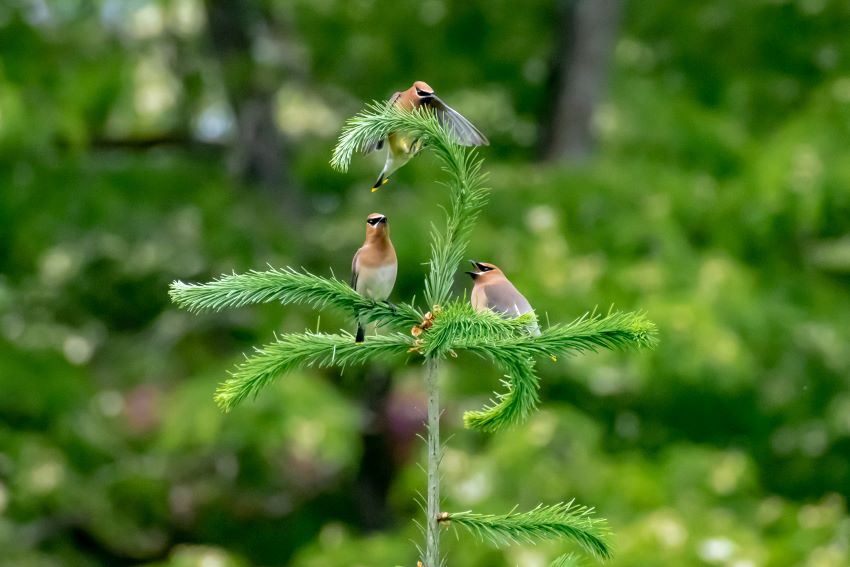
Slowing down the surface water runoff into streams and allowing it to seep into the ground is one of our goals because we want clean water and healthy creeks that are not eroded by high flows. As many know already, water’s infiltration into the soil should happen at a rate that allows for the filtration process to work its magic so all of us get cleaner water naturally and so that more water gets stored in our sole source aquifer instead of running into Puget Sound. Both things are also good for salmon and all fish and critters that use our streams and the Puget Sound, as well as for islanders who want safe and plentiful water coming out of our faucets.
Community members have helped in this meadow a lot. It is heartening to see tangible results when volunteers come together and we use methods proven to work. They are helping us improve wildlife habitat and protect our local water supply.
Turning death into life:
At the north end of the meadow, in the alder grove, we dealt not only with management of invasives and maintaining the native plantings, but we also addressed the safety concern presented by the compromised health condition of many of the alders near the edge of the parking lot. Alders have a naturally short lifespan but are important components of wetland areas providing nitrogen fixing services, habitat, and food. One person’s car had already been damaged earlier in the year by a falling alder, and several others were mostly dead and ready to fall in a storm, so we prioritized bringing them down. When the Vitalitree crew cut the trees, instead of completely removing them, we asked them to leave wildlife snags at safe heights. The cut parts of the alders were turned into woodchips to be used on-site. Now the alder grove is much reduced on its western edge, but it will soon be a great place to watch woodpeckers find a snack and the standing snags will serve other needs for a diverse range of species. It is often said of our lowland rainforest ecosystem, that a dead tree provides for more life than a living one.
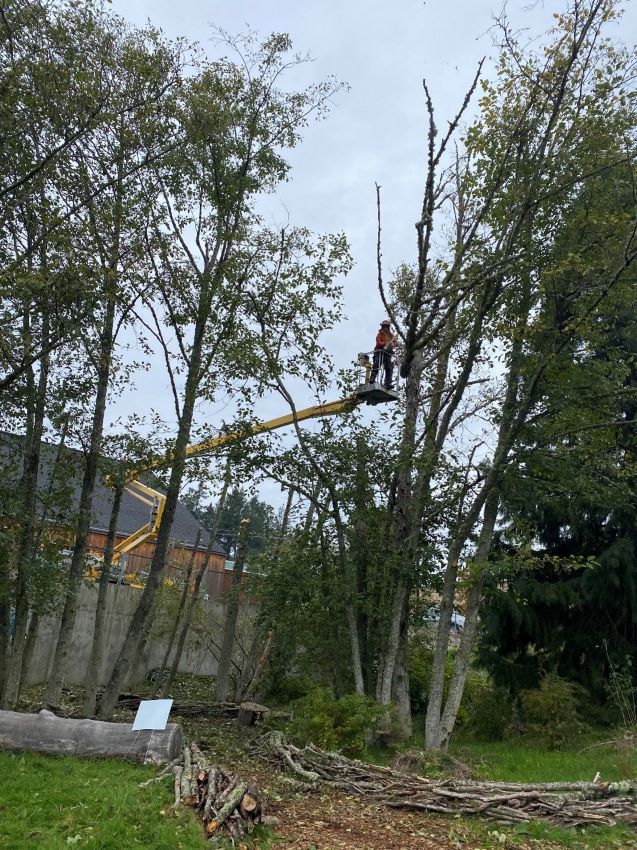
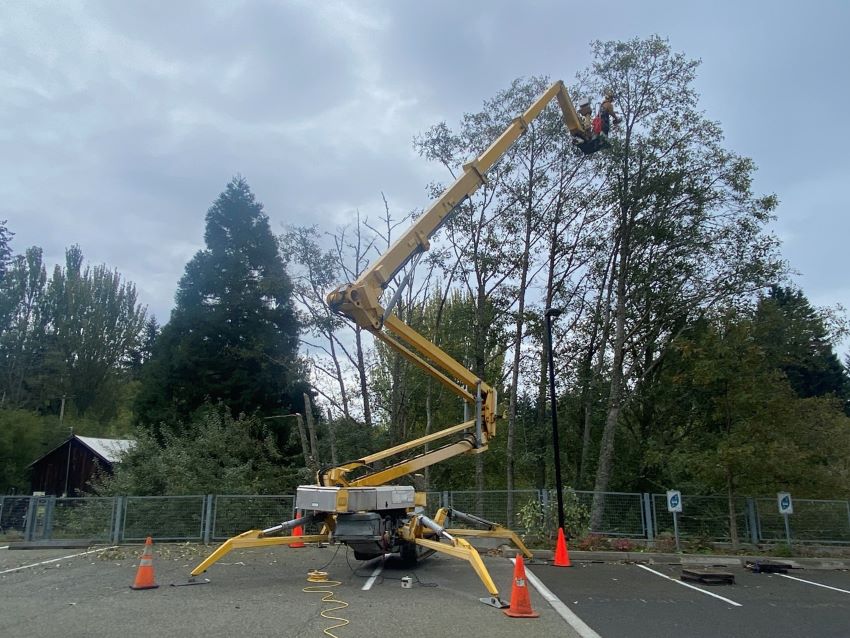
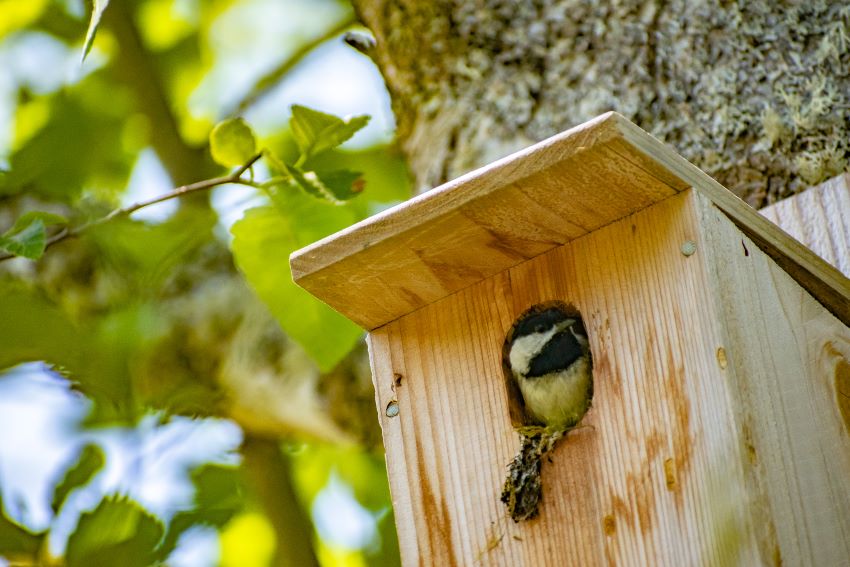
Keeping food for pollinators:
Next to the alder grove is an area that was previously tilled and planted with wildflowers, but it had become choked with turf grass. Using the water and labor friendly technique of sheet mulching, a dedicated volunteer and I have been revamping the area and encouraging the remaining wildflowers, lupine, goldenrod and yarrow, to thrive. If you visit the site, or regularly view it, you may have noticed this wildflower bed getting covered with alder mulch. We hope to be able to improve this wildflower area with more plantings and species to provide forage for more pollinators. We are doing this in part because many of the non-natives we are taking out of the meadow do provide food for pollinators. By strategically planting flowering natives we can keep resources here for pollinators while at the same time getting rid of the non-native plants that tend to take over and decrease diversity on the site. These native wildflowers will also enrich the demonstration site for people to learn how they can do the same on their own properties.
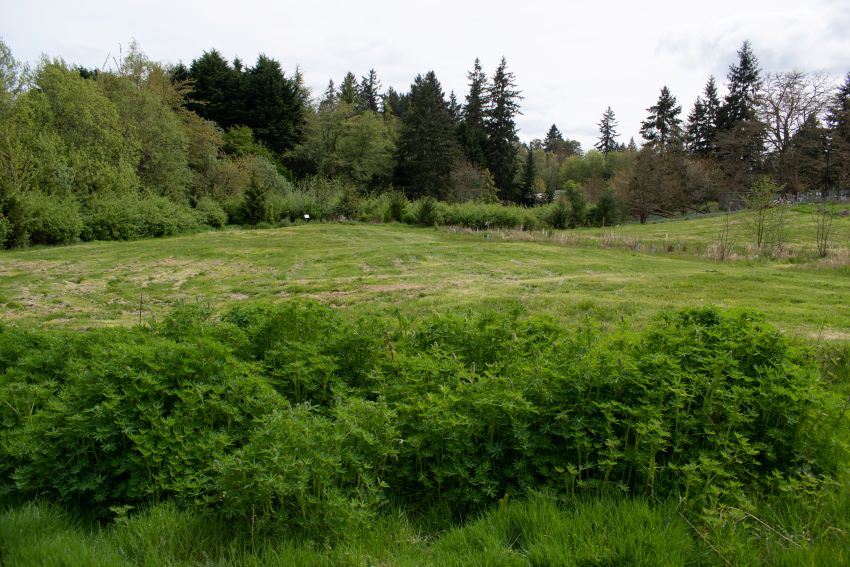
Unlike large swaths of the country (and globe, for that matter), we are blessed with a mild climate, an abundance of botanical and animal life, and frequent water falling from the sky to wash our rocky little island. Many plants from around the world can thrive here. They are not all good for our ecosystem and many do not provide adequate habitat needed by resident wildlife. If we aim to safeguard the health of our water, and the wildlife we live with and love, we must learn about, protect and restore the natural systems that they rely on. This community-minded ideal guides us in the work we do at the Meadow- this wetland that feeds water into Eastern part of the Judd Creek watershed, the largest salmon bearing waterway on Vashon. We know that what we do here has consequences far beyond the boundaries of the site.
I have been honored to help Vashon Nature Center steward and restore the meadow for future generations, on the traditional unceded land of the sxᵕebabs, the Swiftwater people, now a part of the Puyallup Tribe. As our human understanding of the natural world and its interconnectedness expands, restoring human relationships with the land, water, and other-than-human communities around us has increasingly become key to protecting our collective health and wellbeing.
Would you like to volunteer in the meadow? Email Adria at: adriamagrath@gmail.com or sign up for VNC’s newsletter by clicking the newsletter link in the footer of any page on our website: vashonnaturecenter.org

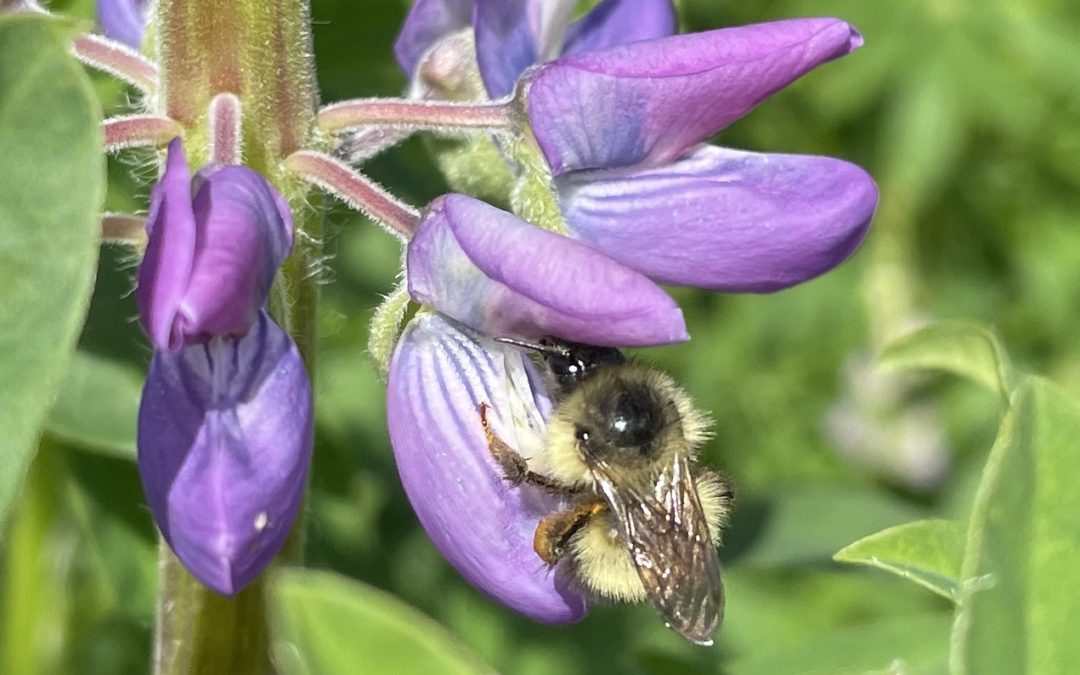
Thank you, Adria, for your service and dedication in nurturing the Heron Meadow! Your update was so informative. The meadow is thriving and evolving, thanks to you and the many volunteers who help you. VCA is so grateful for our partnership with Vashon Nature Center!
Thank you for all of your work, Adria. Heron Meadow looks great!